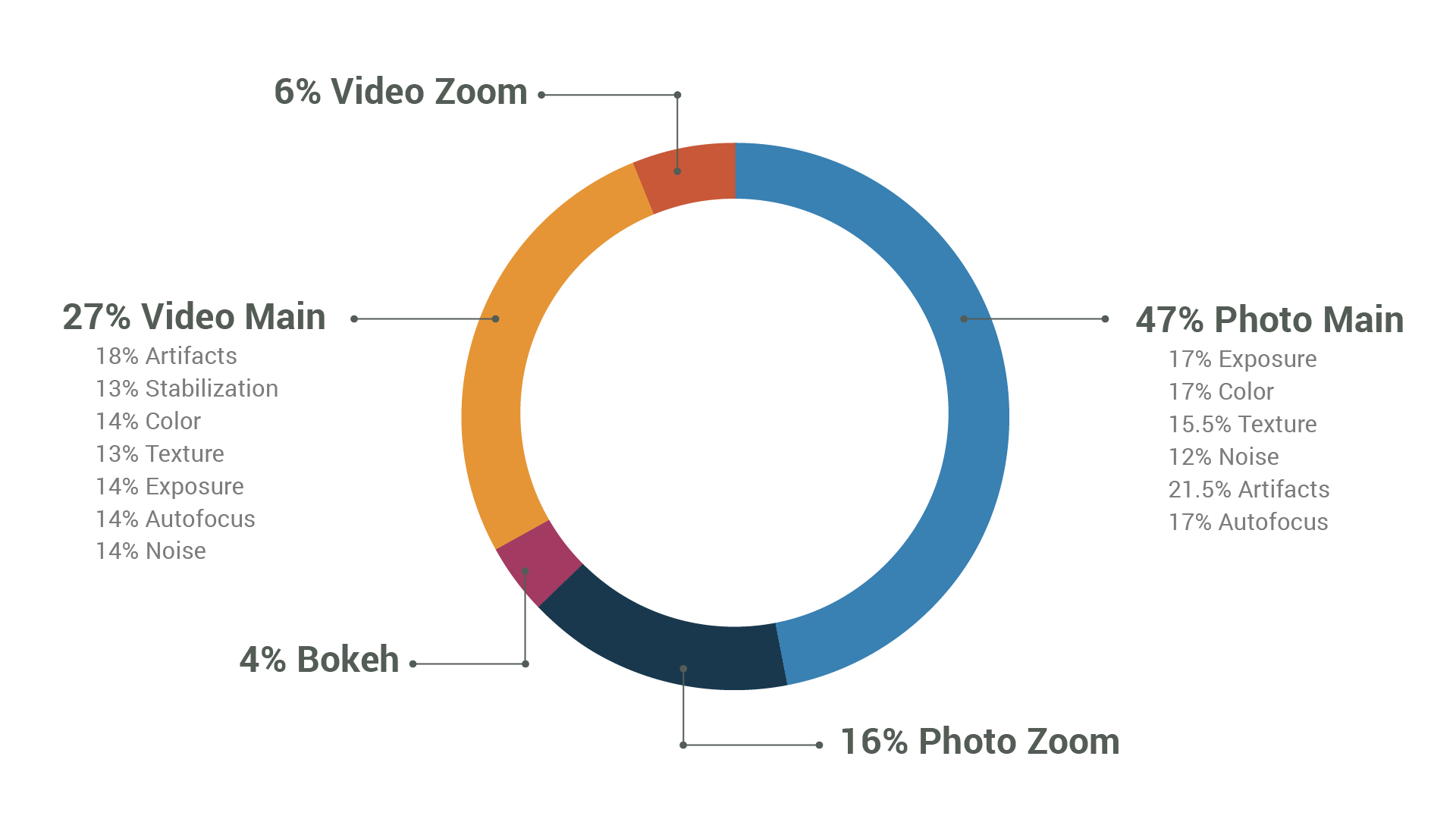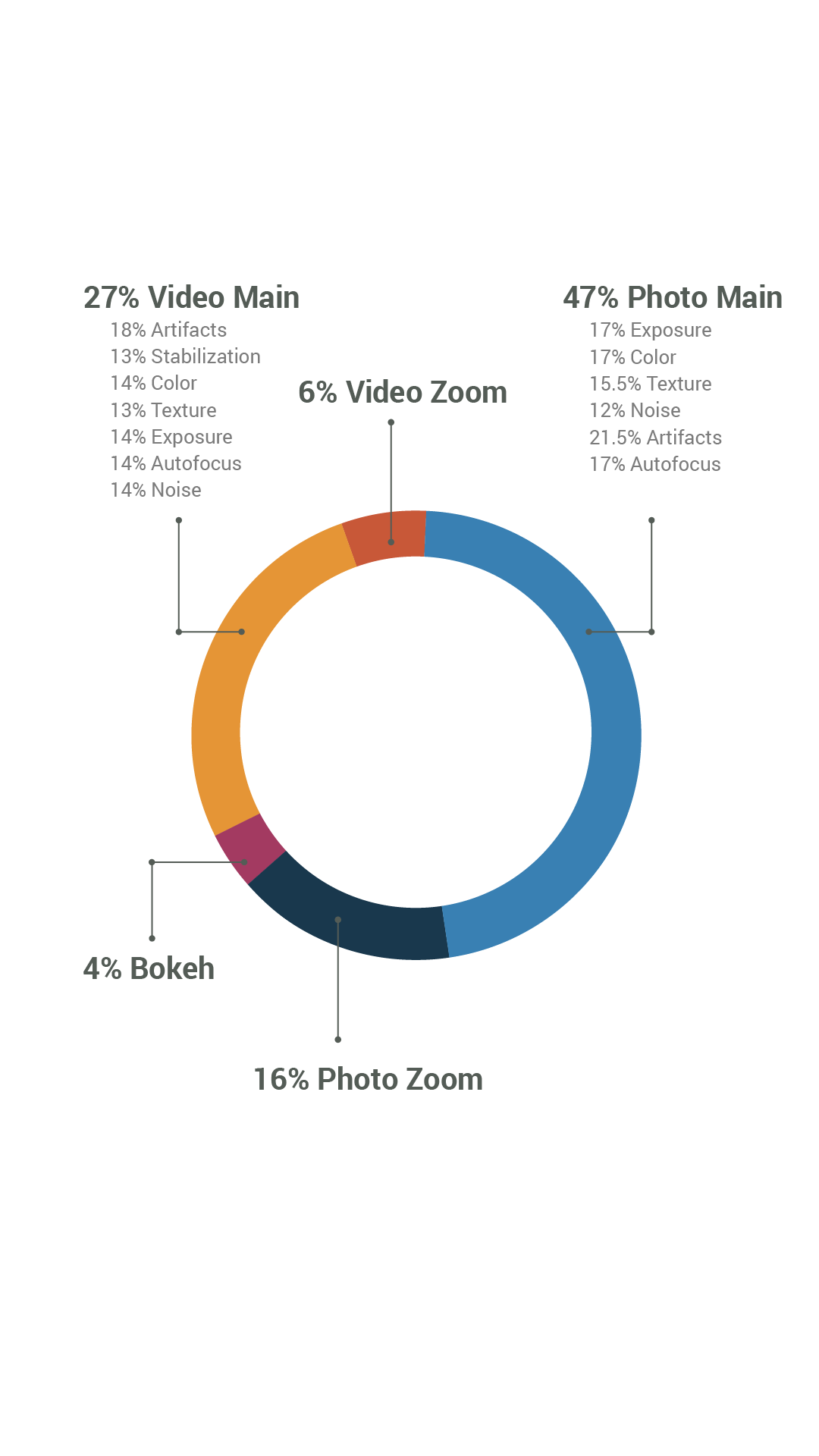Photo Main (Wide) 49%
We evaluate the performance of the smartphone when taking still images in a large number of use cases such as friends & family portraits, landscape, close ups, cityscape, architecture, etc.
Our tests are performed :
-
- Using the default camera app and its default mode, at 1x zoom mode
- In an extended range of lighting conditions from 0.1 lux for lowlight to 10000 lux for bright light conditions and even higher for actual outdoor scenes
- With a tripod or through real or simulated handheld conditions.
To evaluate photo, assessments are made on a total of six technical quality attributes :
Exposure
How well the camera properly adjusts to and captures the brightness of the subject and the background. Face exposure and contrast are also evaluated.
Color
How accurately the camera can reproduce color in a variety of lighting conditions and use cases, as well as how pleasing its color rendering is to its viewers. We particularly focus on white balance, color rendering, color shading, as well as skin tone rendering, which are tested on a large spectrum, from deep to fair to light.
Autofocus
How quickly and accurately the camera can focus on a subject in a variety of lighting conditions. Besides speed, we also evaluate the depth of field adaptation to use cases like group portraits and its capability to capture the instant.
Texture
How well the camera can preserve small and fine details such as those found on object surfaces. A large set of details type is evaluated in all lighting conditions. The level of sharpness is also measured on a moving object, evaluating if the camera freezes well the motion while capturing a high level of details.
Noise
How much noise is present in an image, which is particularly sensitive in low light captures
Artifacts
Any effect appearing in an image which is not present in the original imaged object (distortion, halo effect…)
Important note:
Our range of acceptable renderings for all attributes in various light conditions are based on the findings gathered from our multi-cultural focus groups. We believe that within this inclusive scope, the risk of bias is eliminated when evaluating a smartphone camera for a particular attribute. In keeping with this approach to testing, we do not evaluate manufacturers’ signature renderings.
Photo Bokeh 2%
This sub-score covers the popular yet non default mode often called Portrait or Bokeh in modern smartphones. We evaluate the overall image quality with a simulated depth of field effect.
We check how well the camera separates the subject from the background when taking portraits without accidental blur on the focus plane, as well as the quality of the gradation and naturalness of background blur, which makes the subject stand out. In addition, we evaluate the traditional portrait image quality attributes (such as exposure, color, texture, etc.)
Tests are performed with the bokeh dedicated mode within the camera application.
Photo Telephoto 14%
For this part of the evaluation, we focus specifically on the device’s zoom capabilities particularly its performance using the telephoto lens at up to 350mm (approximately 14x zoom). We assess all aspects of image quality across the entire zoom range, including the presence of artifacts. Each attribute plays a critical role in the overall user experience, so our evaluation is consistent and comprehensive. Some criteria are especially demanding, such as texture preservation at various distances and the device’s ability to maintain a high level of detail throughout different zoom levels. In total, we analyze image quality at 10 distinct zoom distances as part of our photo evaluation.
Photo Ultra-Wide 5%
We evaluate how well the device performs at the widest field of view, zooming out from the standard focal length (from 12mm or 0.5x)
We evaluate all image quality attributes, including artifacts. Every attribute is key in the experience, and we do a homogenous image quality evaluation for the complete ultra-wide range. Some criteria may be more challenging than others. For example: distortion (straight lines appearing curved in an image), face deformation or chromatic aberration, level of detail and level of noise in the field of view.



